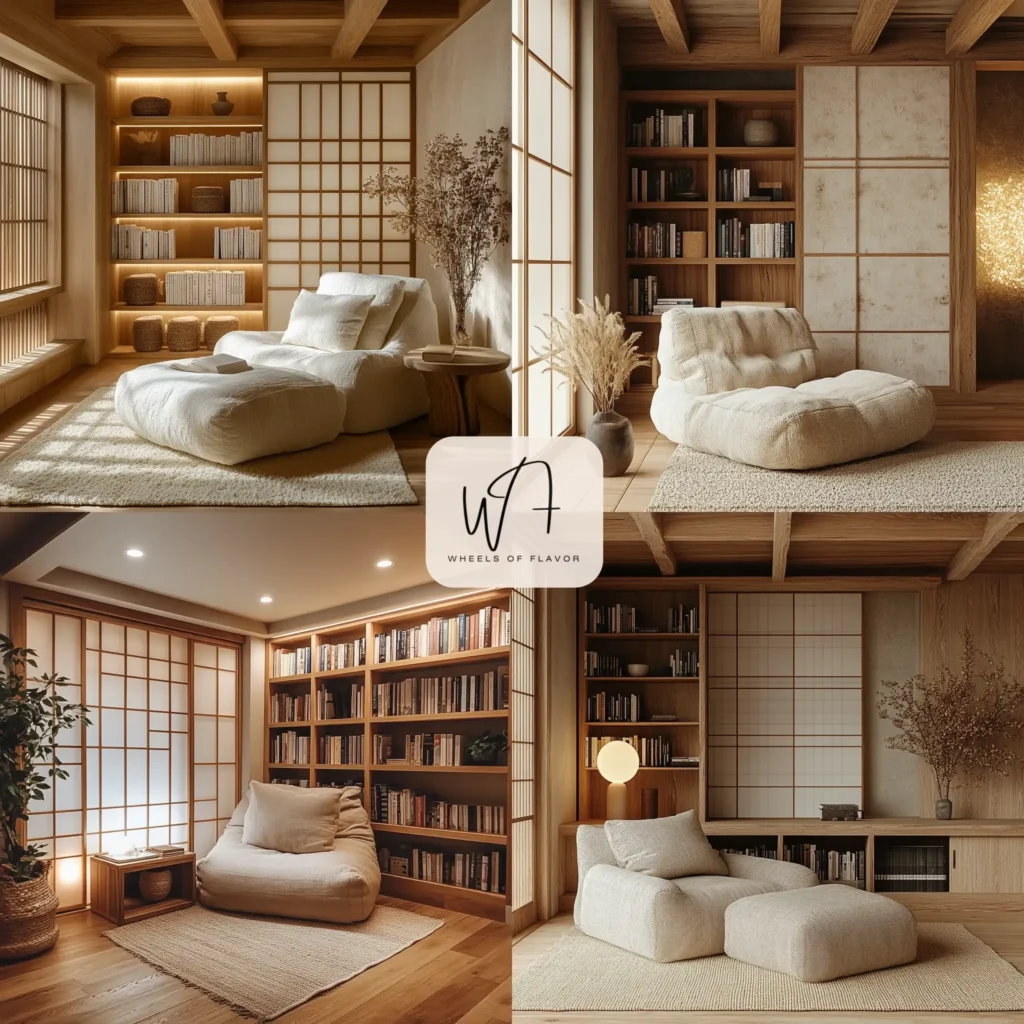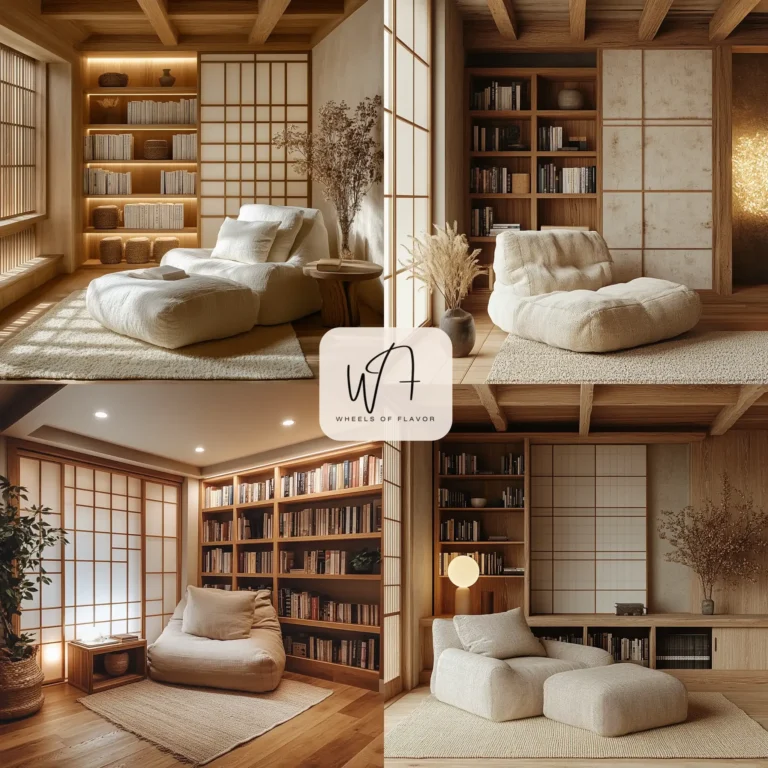Japandi basement remodels are taking the interior design world by storm, combining the clean lines of Japanese minimalism with the warm, functional charm of Scandinavian design. This unique style creates serene, clutter-free spaces that feel both modern and timeless. If you’re looking to transform your basement into a functional yet aesthetically pleasing retreat, Japandi is the way to go. In this article, we’ll explore 12 stunning Japandi basement remodels, share expert tips, and guide you through creating a space that’s both practical and beautiful.
Table of Contents
What Is Japandi Style?
Japandi is a hybrid design philosophy that merges Japanese and Scandinavian aesthetics. Japanese design emphasizes simplicity, natural materials, and mindfulness, while Scandinavian design focuses on functionality, warmth, and coziness (hygge). Together, they create a harmonious balance of minimalism and comfort, making Japandi basement remodels ideal for homeowners seeking a calming yet practical space.
Key elements of Japandi style include:
- Neutral Color Palettes: Think soft whites, beiges, grays, and muted earth tones.
- Natural Materials: Wood, bamboo, linen, and stone dominate Japandi spaces.
- Minimalist Furniture: Clean lines and functional pieces with no unnecessary clutter.
- Textured Accents: Cozy textiles like wool or cotton paired with sleek surfaces.
- Open Space: Emphasis on open, airy layouts to promote tranquility.
Why Choose Japandi for Your Basement Remodel?
Basements often start as dark, underutilized spaces, but a Japandi basement remodel can turn them into inviting retreats. Here’s why this style works so well for basements:
- Maximizes Light: Basements can feel dim, but Japandi’s light color palettes and reflective surfaces brighten the space.
- Encourages Calm: The minimalist aesthetic creates a peaceful environment, perfect for relaxation or work.
- Versatile Functionality: Japandi’s focus on multi-purpose furniture makes it ideal for multi-use basements (e.g., home offices, gyms, or guest rooms).
- Timeless Appeal: Unlike trendy designs, Japandi’s simplicity ensures your remodel stays stylish for years.
For more inspiration on blending styles, check out our Styles and Trends category for ideas to elevate your home.
12 Japandi Basement Remodel Ideas to Inspire You
Here are 12 creative Japandi basement remodels to spark your imagination:
1. Cozy Japandi Reading Nook
Transform your basement into a serene reading retreat with built-in wooden bookshelves, a plush linen armchair, and soft ambient lighting. Add a shoji-inspired screen to separate the space while maintaining an open feel.
2. Minimalist Home Office
Create a distraction-free workspace with a sleek wooden desk, ergonomic chair, and neutral walls. Incorporate bamboo storage solutions to keep clutter at bay, embodying the Japandi ethos of simplicity.
3. Japandi-Inspired Home Gym
Design a calming workout space with wooden flooring, neutral yoga mats, and minimalist exercise equipment. Add large mirrors to enhance light and create a sense of spaciousness.
4. Tranquil Guest Suite
Turn your basement into a cozy guest room with a low wooden bed frame, linen bedding, and textured throw pillows. Use soft lighting and natural wood accents to create a welcoming vibe.
5. Zen Meditation Space
Craft a peaceful meditation corner with a tatami mat, low seating, and a small indoor Zen garden. Keep decor minimal to foster mindfulness, a core principle of Japandi basement remodels.
6. Multi-Functional Family Room
Design a versatile family space with modular furniture, such as a low-profile sofa and stackable stools. Use neutral rugs and wooden coffee tables to tie the room together.
7. Japandi Home Theater
Create a minimalist home theater with a sleek media console, cozy seating, and acoustic panels in neutral tones. Add blackout curtains to control light and enhance the cinematic experience.
8. Creative Art Studio
Turn your basement into an artist’s haven with large wooden worktables, open shelving for supplies, and plenty of natural light (if possible). Keep walls neutral to let your artwork shine.
9. Japandi Bar Area
Install a minimalist bar with a wooden countertop, bamboo stools, and open shelving for glassware. Add subtle lighting to create a warm, inviting atmosphere for entertaining.
10. Cozy Playroom
Design a kid-friendly Japandi basement remodel with soft rugs, low storage units, and natural wood toys. Use muted colors to maintain a calm environment that’s still fun for kids.
11. Spa-Inspired Bathroom
If your basement includes a bathroom, go for a Japandi-inspired design with a freestanding tub, wooden accents, and stone tiles. Add plants for a touch of nature.
12. Open-Concept Living Space
Combine multiple functions (e.g., lounge, dining, and workspace) in an open-plan layout. Use neutral tones, wooden furniture, and textured accents to create a cohesive Japandi look.

Tips for Executing a Japandi Basement Remodel
Ready to start your Japandi basement remodel? Follow these expert tips to ensure success:
- Focus on Lighting: Basements often lack natural light, so incorporate layered lighting (ambient, task, and accent) to create warmth. Use warm-toned LED bulbs and minimalist fixtures.
- Choose Quality Over Quantity: Invest in high-quality, multi-functional furniture rather than filling the space with unnecessary items.
- Incorporate Greenery: Add small indoor plants like bonsai or ferns to bring nature indoors, a key element of Japandi design.
- Declutter Regularly: Japandi thrives on simplicity, so adopt a minimalist mindset and keep only what’s essential.
- Use Textures Wisely: Balance sleek surfaces (like wood or stone) with soft textiles (like wool or linen) for a cozy yet refined look.
For more detailed advice, explore this insightful article on Japandi design principles from Architectural Digest, a trusted resource for home inspiration.
Common Mistakes to Avoid in Japandi Basement Remodels
While Japandi is forgiving, there are pitfalls to avoid:
- Overcrowding the Space: Too much furniture or decor disrupts the minimalist aesthetic.
- Ignoring Functionality: Ensure every piece serves a purpose, as Japandi prioritizes utility.
- Using Bold Colors: Stick to neutral, muted tones to maintain the serene vibe.
- Neglecting Lighting: Poor lighting can make a basement feel cold and uninviting.
How to Budget for a Japandi Basement Remodel
Japandi basement remodels can suit various budgets, depending on the scope. Here’s a quick breakdown:
- Low Budget ($2,000–$5,000): Focus on paint, lighting, and affordable furniture like second-hand wooden pieces.
- Mid-Range Budget ($5,000–$15,000): Upgrade flooring, add built-in storage, and invest in quality minimalist furniture.
- High-End Budget ($15,000+): Incorporate custom woodwork, high-end materials like stone, and professional design services.
To keep costs down, shop for sustainable, second-hand pieces or explore budget-friendly retailers like IKEA, which offers Japandi-inspired furniture.
FAQs About Japandi Basement Remodels
What makes Japandi different from other minimalist styles?
Japandi combines the clean lines of Japanese design with the cozy warmth of Scandinavian style, creating a unique balance of simplicity and comfort.
Can I do a Japandi basement remodel on a budget?
Yes! Focus on neutral paint, second-hand furniture, and affordable textiles to achieve the look without breaking the bank.
How do I make my basement feel less dark with a Japandi remodel?
Use light colors, reflective surfaces, and layered lighting to brighten the space. Mirrors can also enhance the perception of space.
What materials are best for a Japandi basement remodel?
Opt for natural materials like wood, bamboo, linen, and stone to create an authentic Japandi aesthetic.
Where can I find more Japandi design inspiration?
Browse our Styles and Trends category or check out high-authority blogs like Dwell for modern design ideas.

